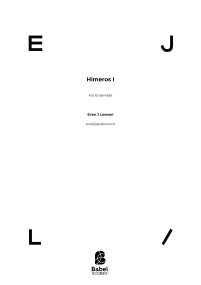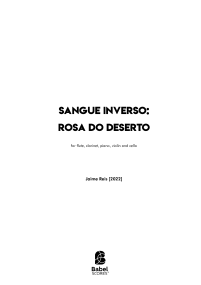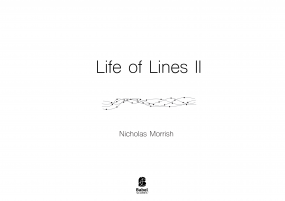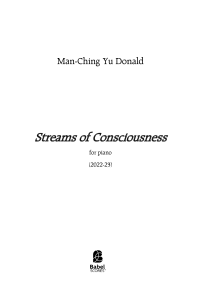Recherche avancée
Schuetten
ISMN : 979-0-2325-7464-6
- Identifiez-vous pour créer une liste
This work is about different degrees of accuracy in the conversion of concrete recordings from a cement plant (Lafarge plant Mannersdorf in Lower Austria) into an abstract instrumental language. Nine solo pieces for violin, cello and piano are created on the basis of more or less precise instructions from the composer. The areas of composition and improvisation blur or combine. The aim is not to realize the recordings as faithfully as possible, but to transform the concrete into the abstract, including the "translation errors" that this process entails. The focus is on the degrees of accuracy and freedom, zooming in and out of the material and musical material in different ways, the various possibilities of representing sound itself are thematized.
Gradation A
Three samples each from the cement works are selected by the composer and passed on to the performers as an acoustic basis or score. These samples serve as a stimulus for an improvisation; no script is to be created. A more or less rough translation of the concrete sounds onto the instrument takes place.
Gradation B
The same samples serve the composer as a template for a graphic score. This graphic score is realized on the instrument.
Gradation C
The same samples serve the composer as a template for a detailed, precisely notated score. In this case too, compositional freedom takes precedence over a faithful acoustic tracing of the sample.
The term cement, whose etymological meaning can be derived from caementum, i.e. quarry stone, and caedere = "to strike with a chisel", already contains varying degrees of granularity.
Cement is classified as a bulk material, a granular or lumpy mixture - pouring is a defined term for handling bulk materials. Once an activation energy has been exceeded, bulk materials can behave like a liquid.
Violin
Cello
Pages - 52













